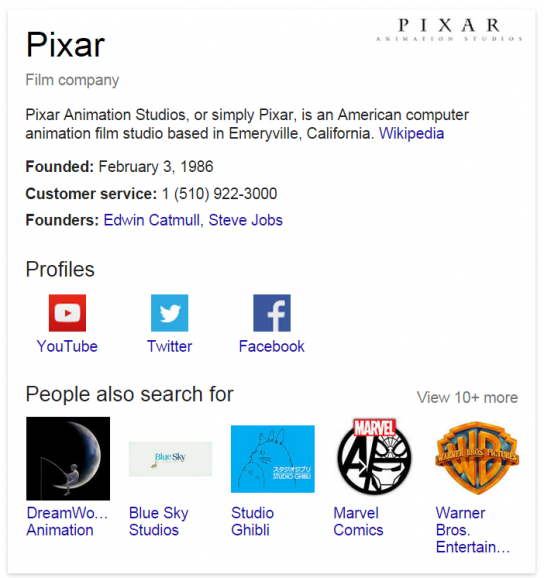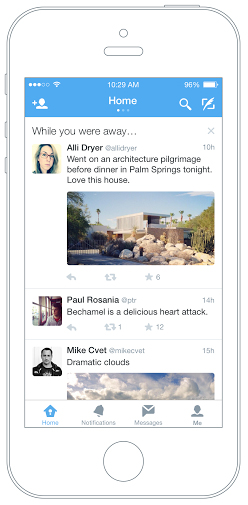Internet Marketing News January 2015 Recap
February 4, 2015Happy February! Here is an overview of the top internet marketing news stories of January 2015.
- Google has updated its Web History platform to include Google Now cards that have been served in the past.
- As a further enhancement, Google announced Android users can integrate Google Now with third-party apps such as Airbnb, Guardian, Shazam, and Ford. The full list of developers can be found here.
- Google has also sent mass notifications to webmasters whose sites are not mobile friendly. The warning threatened that these mobile sites will not rank well, potentially hinting at a new algorithm update.
- Additionally, Google is changing a site’s mobile search result snippet if it blocks Google. The snippet will then read “A description for this result is not available because of this site’s robots.txt – learn more”.
- Google has updated its knowledge graph to include social media icons and links to networks like Facebook, Instagram, Twitter, Myspace, YouTube, and Google+.
- It has also updated its Maps iOS and Android app to allow users to filter restaurant search results by cuisine. iOS users can also see weather information inside maps, drop a pin in directions, and include directions in the calendar. Android users can see Google contacts when searching for addresses and claim business listings to manage their presence.
Bing
- Following Google, Bing is now disallowing advertisers from putting a phone number in their Ads. This goes in affect for new campaigns in February while legacy campaigns can run until June. The goal of course is to use Bing’s call extension where an advertiser pays per the click-to-call.
- Bing now displays a carousel of bestselling books when a user searches for “bestselling books” in a certain genre. The books are displayed according to the New York Times weekly or monthly sales data.
- Microsoft rolled out ad units on its MSN iOS and Android app in 24 markets. This allows advertisers to place display ads that are targeted based on the content (news, weather, sports, etc.) on mobile.
Yahoo
- NBC launched an ad hub for the Super Bowl, posting television spots to their Tumblr immediately after their air.
- Tumblr also updated its platform to support long-form content—competition with Medium and LinkedIn Plus. Instead of thumbnail like posts, Tumblr is looking more like a standard blog.
- After being rumored for months, Facebook launched “Facebook at Work” externally. The new app and site are a pilot for a new way for enterprise companies to communicate and collaborate.
- For the Super Bowl, Facebook debuted a new target segment, “Big Game,” which allows advertisers to target users such as football fans and those commenting and liking content around prepping for the game, such as big screen TVs and recipes.
- Facebook launches Place Tips, similar to Foursquare’s feature, but only from your network. Facebook tips are opt-in and will appear as notifications above your newsfeed.
- Facebook is trying to improve its newsfeed algorithm by including human feedback. Facebook has put together a team of 600 individuals to spend time with the New Feed and provide feedback through an eight-question survey.
- Twitter is testing a “While You Were Away” feature that displays content algorithmically on top of the Twitter feed upon opening.
- After testing since 2012, Twitter fully integrated Bing Translate to its desktop, iOS, and Android versions as well as to Tweet Deck. This enables users to translate tweets quickly by clicking on the globe on the tweet.
- Twitter debuted a native video product that allows users to record and tweet 30-second videos directly through the platform.
- Twitter introduced private group chats, an update to their long-standing Direct Messaging platform.
- LinkedIn has updated its search functionality to provide users with a personalized and richer search experience. Search results are now prioritized by connections instead of returning all people. LinkedIn users can also sort results by people, jobs, companies, groups, universities, post, inbox, and all content. Below is a video on the recent changes.
- LinkedIn is rumored to be working on a series of intra-company tools to help coworkers connect. The first is allowing users to send In-Mail messages to anyone within their company. The second is a content sharing tool which allows administrators to send certain content to sub groups.
- Pinterest acquired Kosei, a startup focused on personalized product recommendations. Through this acquisition, Pinterest will be able to better map the connections between products, people, and their interests.
- Pinterest adjusted its Guided Search to serve results based on gender. This change is in an effort to attract more males to its platform.
- The platform has started posting Promoted Pins on a user’s home feed. Promoted Pins formerly appeared on category pages and search results.
Snapchat
- Snapchat launched a new feature, Discovery, a major shift from its traditional picture messaging roots. Discovery allows users to consume media from brands like ESPN, People, and Comedy Central. This section acts more like a digital magazine with video, images, and long-form content.
Have any questions about any of the above stories or think we missed something? Let us know in the comments section below. Also, be sure to check back in early March for our February recap. In the meantime, check out our Thoughts Page featuring our latest publications, blog posts, and featured articles; and sign up for the Catalyst Must-Have Digital Insights e-Newsletter for the latest thought leadership, industry updates, and Catalyst news.








